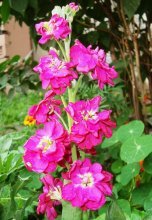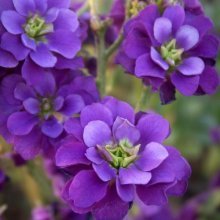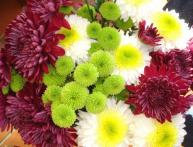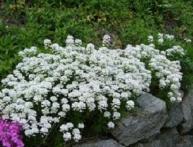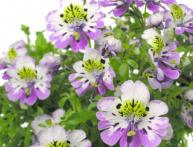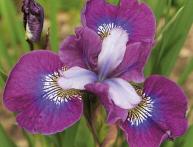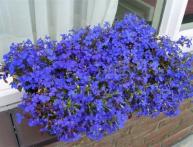Levkoy, effective cultivation from seeds and transplantation rules
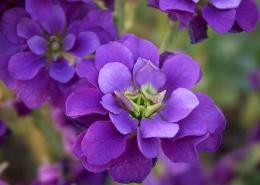
Levkoy is a semi-bushy plant, the height of which is 30-80 cm. The leaves of the flower have an oblong shape and a bluish-green color. The flowers have a terry structure and a strongly spicy aroma. The diameter of the flower is 2-3 cm, the inflorescences themselves are collected in a spike. The flowers of the plant can be simple or double. Education seeds occurs only in simple flowers.
Content:
- How to sow with levka?
- Transplantation into open ground
- Features of growing gillyflower
- Levkoy pests and diseases
How to sow with levka?
To ensure long flowering of gillyflower, you need to start sowing in February and continue to sow every twenty days. To prevent the plant from being damaged by the black leg, it is better to sow it in calm, not too sunny weather. A weak solution of potassium permanganate, which is poured into boxes with soil before sowing, will also help prevent damage.
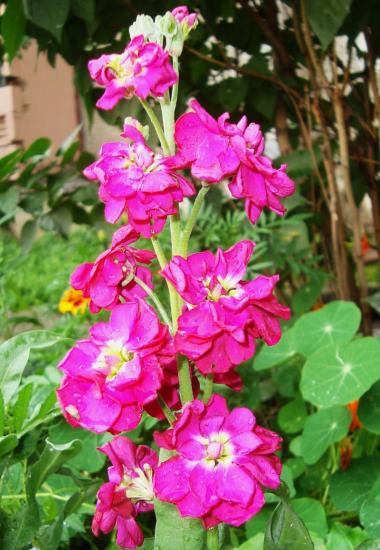
When the first shoots appear, the boxes with plants must be moved to a ventilated room, the temperature in which should not exceed ten degrees. During the growth process, moderate watering of seedlings should be carried out. Watering should be done only in the morning so that the surface of the soil can dry and be well ventilated during the day.
The next stage after sowing left-handed grass is dive. This work should be carried out only after two seven-lobed leaves have appeared on the seedling.Containers for picking should have a removable bottom so that transplantation can be carried out with a lump of earth. This is due to the fact that Levka does not tolerate transplantation well and for better survival of the flower, it is better to plant it with soil.
Transplantation into open ground
For transplantation, it is better to choose a windless and sunny place. The soil for replanting can be any, but if possible, it is better to be loamy. Before planting, the soil must be fertilized with organic fertilizers. Next, you should make holes and water them with water. Sprouts are planted in the prepared holes along with a lump of earth. The planted plant should be sprinkled with earth around it and pressed down.
Video about the gillyflower (matthiola):
When transplanting, you should leave a distance of thirty centimeters between plants. Levkoya seeds can be done immediately plant into open ground. This should be done at the end of April. After about four leaves appear on the seedlings, thinning is carried out. In this case, the distance between shoots should be about five centimeters.
Features of growing gillyflower
In the process of growing gillyflower in pots, it needs to be gradually hardened. This is necessary so that in open ground it can easily withstand frost. Therefore, in the rooms where the seedlings are located, you must first open the windows, and then the entire window. It is advisable to transplant into open ground on a cloudy day so that the plant can better tolerate planting.
It is very important that plants of the cruciferous family do not previously grow in the place where the gillyflower will be planted. After all, Levka will very quickly become infected with blackleg, or clubroot.
In the winter season, it is better not to feed the flower, since in winter the flower should be dormant.When growing gillyflower, it is very important to maintain sterility. Flower seeds can remain viable for about six years. After lefty will bloom, it is not advisable to plant this flower in the same place in the second year. Levy can be planted in this place only after three years.
Levkoy pests and diseases
Cruciferous flea beetles. These are colorful little bugs that eat holes in the pulp of leaves, or completely skeletonize them. Damaged plants die very quickly. To combat these pests, it is necessary to treat the leaves of the gillyflower and the soil with ash.
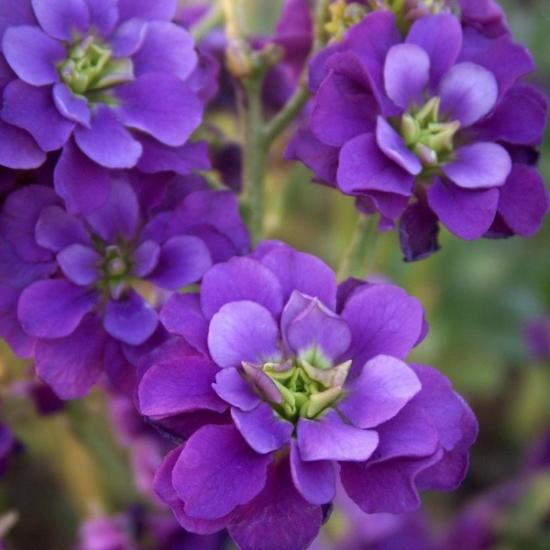
Spring cabbage fly. In appearance, it resembles an ordinary housefly. Cabbage fly larvae mainly damage the root of the plant, but sometimes they can and can eat away the internal passage of the root and root collar. If a flower is heavily damaged by pests, it dries out. To prevent pests from attacking the plant, you should regularly weed cruciferous weeds.
Also during the budding period, leftovers need pollinate tobacco mixture and ash. If there are too many insects on the plant, you will have to use special chemicals. Rapeseed flower beetle. This is a bug whose larvae eat the pistils and stamens of the plant. As a result, damaged buds fall off and dry out.
As for the diseases of Levkoy, they include:
- Levkoy mosaic. This is a disease that appears as mosaic spots on the petals and leaves of the plant. Therefore, in order to prevent infection of all plants, the affected flowers must be completely removed.
- Blackleg. With the development of this disease, seedlings and flower seedlings are affected. A diseased plant becomes thin, turns brown and may rot.To prevent this disease, watering should be done with the addition of potassium permanganate. Seed treatment should also be carried out periodically.
- Clubroot cruciferous. This disease appears when a fungal infection penetrates the roots of a plant. When damaged, plant cells enlarge and as a result growths are formed. Even after the plants die, the infection can remain in the soil for up to five years.

